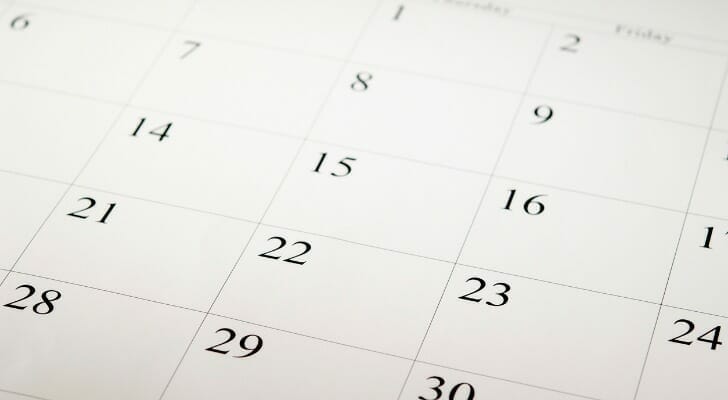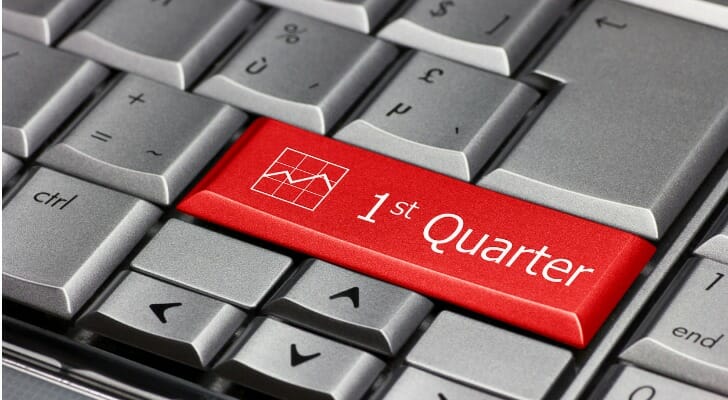The dividend record date establishes when shareholders are eligible to receive dividend payments. Anyone who owns shares before the record date will collect the dividend, while anyone who owns shares afterward will not. In order to qualify for a dividend payment you must have completed your purchase of the company’s shares at least two business days before the record date. A financial advisor can help you as you develop your dividend investing strategy and tactics.
What Is the Dividend Record Date?
The dividend record date solves the problem of the rapid change in a publicly traded corporation’s ownership. On the one hand, stocks are extremely fluid assets. They trade constantly and in high volumes. On the other hand, there is a gap between when companies announce that they’re paying dividends and when those payments actually arrive. This can lead to a potentially chaotic system, as companies might not always know who they owe dividend payments to at any given time.
To smooth these transactions, companies apply two concepts: the dividend record date and the ex-dividend date.
Dividend Record Date
The dividend record date is the date set by a company to determine eligible shareholders when it announces a dividend. Anyone who is the recorded owner of qualifying shares on the dividend record date will receive a payment. Anyone who is not a recorded owner of qualifying shares on the dividend record date will not.
This is true even if you buy shares of the stock before the company actually pays its dividends. If anyone buys or sells shares after this date, the company still makes its payment to the entity that was the recorded owner on the dividend record date.
Ex-Dividend Date
The ex-dividend date is the day on which shares of a given company’s stock no longer come with the right to collect the next dividend payment. Instead, on and after this date, the seller retains that right. The ex-dividend date is typically one business day before the dividend record date. This can push the ex-dividend date back significantly depending on weekends or holidays.
The dividend record date gives a company certainty. If it simply assigned dividend payments based on ownership on the date of payment, the firm would struggle to organize its books. By separating the dividend record date from the payment date the firm gets time to clearly establish every entity that is entitled to collect a dividend. This makes the accounting process much easier.
The relationship between the ex-dividend date and the dividend record date reflects the fact that it takes two business days to complete a stock transaction in U.S. markets (as well as other major markets). If you make a purchase on the 1st of the month, ownership will transfer on the 3rd, assuming there’s no weekend or holidays between the two dates, and vice versa. If you buy a share of stock on the 2nd you won’t own it until the 4th.
As a result of this lag time, it is entirely possible for someone to both have purchased shares of a stock by the dividend record date and yet not be the stock’s registered owner at the deadline. The ex-dividend date makes that relationship clear. If someone sells a stock after the ex-dividend date, they still collect the payment on that round of dividends. Hence the naming; after the ex-dividend date a stock is sold “ex-dividend” or “without dividend.”
It is not uncommon for a stock’s price to fluctuate around the ex-dividend date, as investors buy in time to collect payment and lose interest once they can no longer do so.
Two Exceptions to the Rules
 There are few laws establishing exactly when a company has to determine its payment, dividend record and ex-dividend dates. While the ex-dividend date is largely determined by the legal and market requirements for stock transactions, these things can be case specific. You should be aware of two of the most common exceptions to standard practice. If the dividend payment is worth 25% of the total value of the security, then whoever owns the stock on the payment date is entitled to the dividend. This means that the payment date and the dividend record date are the same, and the ex-dividend date is the first day after the payment date.
There are few laws establishing exactly when a company has to determine its payment, dividend record and ex-dividend dates. While the ex-dividend date is largely determined by the legal and market requirements for stock transactions, these things can be case specific. You should be aware of two of the most common exceptions to standard practice. If the dividend payment is worth 25% of the total value of the security, then whoever owns the stock on the payment date is entitled to the dividend. This means that the payment date and the dividend record date are the same, and the ex-dividend date is the first day after the payment date.
If, for some reason, the shareholder has not registered their purchase of a stock by the dividend record date, they will not collect the dividend. This is true even if they bought their stock before the ex-dividend date. A company will only make payments to entities that are recorded owners of its stock on the dividend record date. If the transaction has not been recorded, the sale didn’t happen for the purposes of paying a dividend.
Example of the Dividend Record Date
Say that ABC Corp.’s board of directors intends to announce a dividend. It might set the following four key dates for its process:
Declaration Date – June 1
On June 1 ABC announces that it will pay a dividend of $0.50 per share to holders of all classes of stock.
Ex-Dividend Date – July 14
Any stock bought or sold on or after July 14 will come “ex-dividend.” If you want to collect this round of dividend payments by ABC, you must buy shares of stock before July 14.
Due to the lag time in stock transactions, if you buy shares of ABC on July 14 you won’t technically own those shares on July 15 (the cutoff date for collecting this round of dividend payments). You will still get the stocks, but on the 16th. Whoever sold them to you will collect the associated dividend payments.
Dividend Record Date – July 15
Anyone who is recorded as owning ABC shares on July 15 will receive $0.50 per share. This is the formal cutoff date for collecting on the company’s dividend payments. You must have completed all transactions by July 15 in order to be eligible.
Anyone who sells their stock after July 14 but before Aug. 1 will still collect this round of payments.
Dividend Payment Date – Aug. 1
The company will pay all shareholders (defined as all recorded ABC shareholders as of July 15) $0.50 per share on Aug. 1. The two week gap between the dividend record date and the payment date will give ABC time to confirm everyone to whom it owes money.
The Bottom Line
 Understanding the dividend record date is essential for anyone engaged in dividend investing. It is the cutoff date for collecting dividend payments. Anyone who is the recorded owner of a stock on that date can be eligible for payments, while anyone who records their ownership of the stock after the dividend record date will not. Be sure you understand this practice as well as the exceptions so you don’t miss out on any payments.
Understanding the dividend record date is essential for anyone engaged in dividend investing. It is the cutoff date for collecting dividend payments. Anyone who is the recorded owner of a stock on that date can be eligible for payments, while anyone who records their ownership of the stock after the dividend record date will not. Be sure you understand this practice as well as the exceptions so you don’t miss out on any payments.
Tips on Dividend Investing
- Calculating dividend yield will help you determine how much of a dividend you’ll get back for each share of a company you invest in compared to the price cost of the share. This guide to calculating dividend yield lets you compare stocks and see which is going to give the best value.
- Dividends are a form of income investing. This means that you invest with the purpose of collecting payments over time rather than making money off of an asset sale. And when it comes to picking out income investments, you’ll usually do better with a sound advisor. Finding one doesn’t have to be hard. SmartAsset’s matching tool can help you find a financial professional in your area to give you that advice, and much more. If you’re ready, get started now.
Photo credit: ©iStock.com/Deepak Sethi, ©iStock.com/kyoshino, ©iStock.com/jurgenfr
